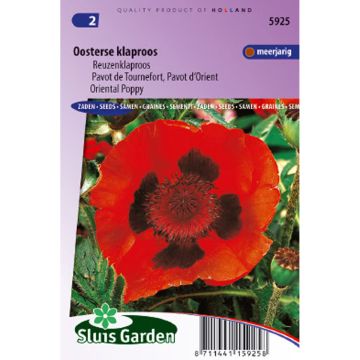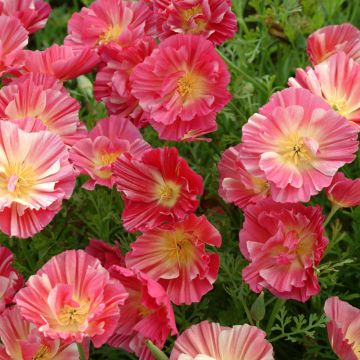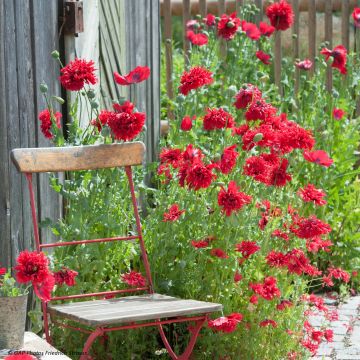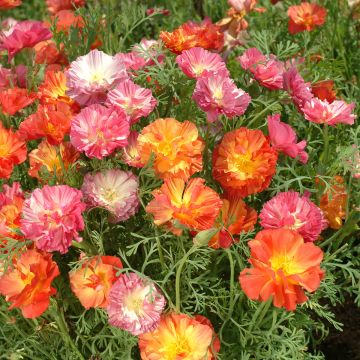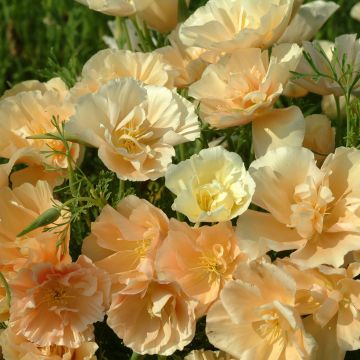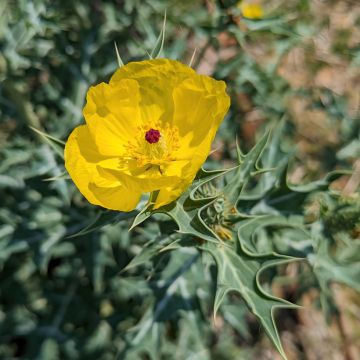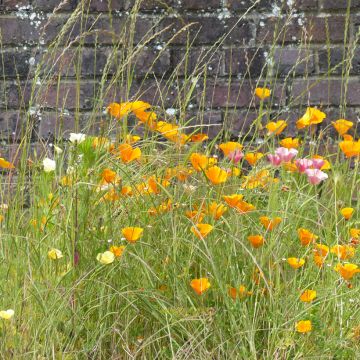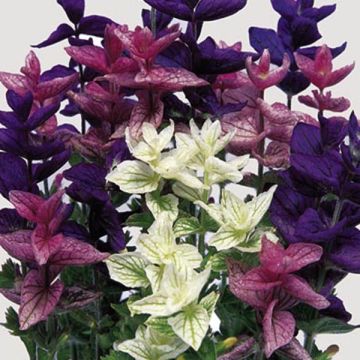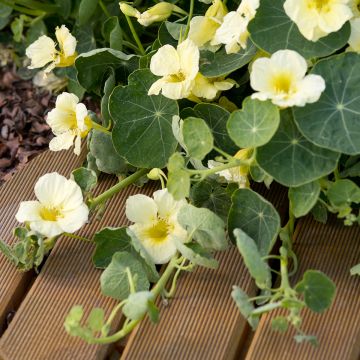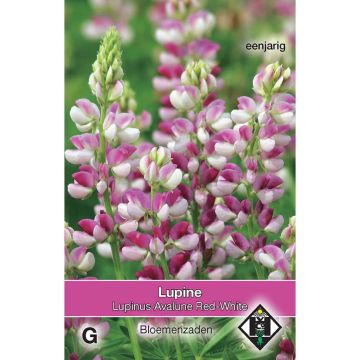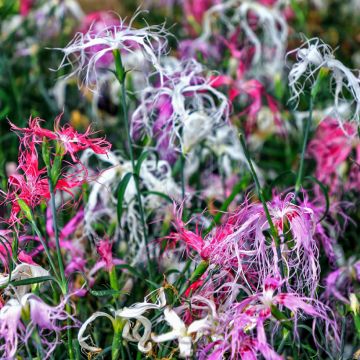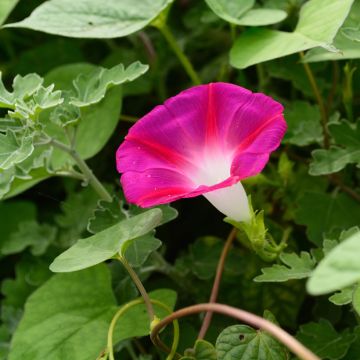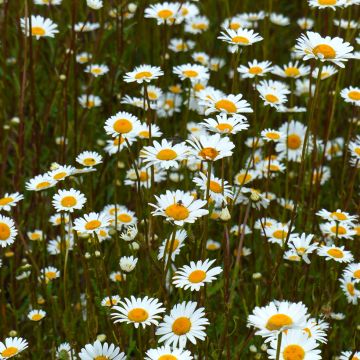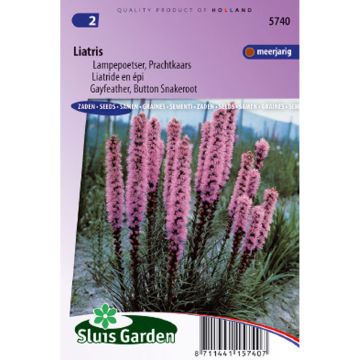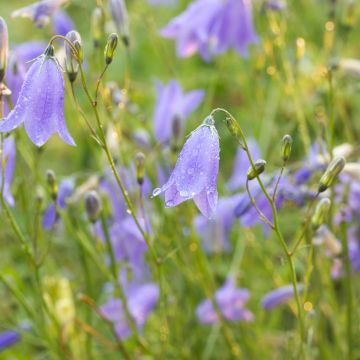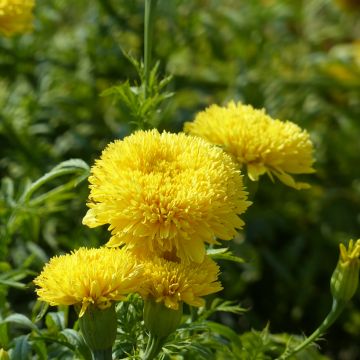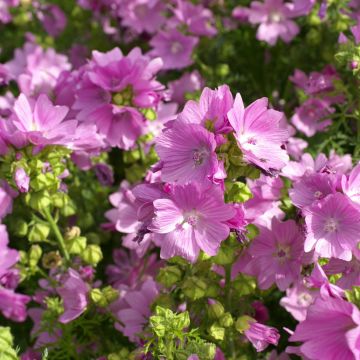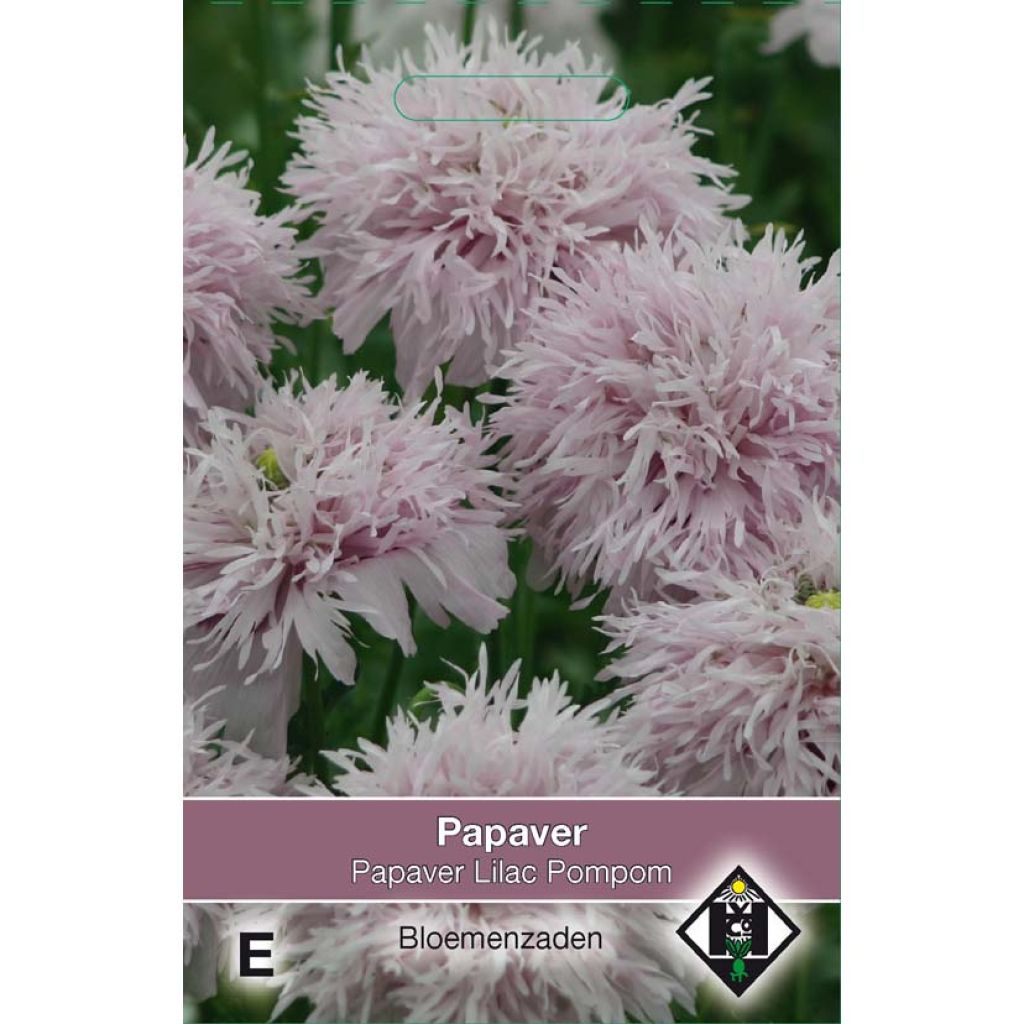

Graines de Pavot annuel Lilac Pompom - Papaver somniferum
Papaver paeoniflorum Lilac Pompom
Papaver paeoniflorum Lilac Pompom
Peony Poppy
They are magnificent when planted alongside other poppies and cornflowers. Sown directly into the ground, they bloomed abundantly two and a half months later.
Anne, 02/06/2020
This item cannot be shipped to the selected country
Dispatch by letter from €3.90
More information
Schedule delivery date,
and select date in basket
This plant carries a 6 months recovery warranty
More information
We guarantee the quality of our plants for a full growing cycle, and will replace at our expense any plant that fails to recover under normal climatic and planting conditions.
Seed-only orders are dispatched by sealed envelope. The delivery charge for seed-only orders is €3.90.

Does this plant fit my garden?
Set up your Plantfit profile →
Description
The Papaver paeoniflorum 'Lilac Pompom' is a glamorous annual poppy, with its large, frilly, peony-like flowers in a lilac pink. Each flower has many finely cut petals, giving it a unique and delicate beauty. They bloom in summer at the top of tall, sturdy stems emerging from abundant foliage, which is ornamental with its bluish-green silver colour. The flowers are followed by decorative fruits filled with seeds. This variety can be sown directly in the ground in mild regions in spring or early autumn. It will easily self-seed in light soil, in full sun.
The annual 'Lilac Pompom' is a horticultural variety classified as an opium poppy with peony-like flowers of the Laciniata type. All poppies belong to the Papaveraceae family. 'Lilac Pompom' is derived from the closely related Papaver "paeoniflorum", which is closely related to P. somniferum. The latter can be found in the Asian mountains and in Europe on the limestone terrains frequented by poppies. This plant, probably native to the Mediterranean and Asia Minor regions, has given rise to many long-cultivated varieties for ornamental purposes. 'Lilac Pompom' has magnificent glaucous foliage, with beautiful lobed and elliptical leaves showing a notched edge. From this 30 to 45 cm (12 to 18in) wide clump of vegetation, from June to August, tall stems emerge, bearing seductive solitary flowers at a height of 80-90 cm (32-35in) from the ground. They are double, spherical, formed by frayed petals, similar to a tattered petticoat. The heart of the flower is almost invisible. The flowering, attractive to pollinators, gives way to a characteristic fruit filled with tiny black seeds, very ornamental, which takes on a slate blue hue when drying, changing with the light due to the crystallised wax film that protects it. Opium poppies have a taproot that does not tolerate transplanting well, so it is better to sow them in place. They are hardy annual plants, and early autumn sowings can withstand not-too-harsh winters. In this case, flowering is earlier in spring.
Comfortable in sophisticated or romantic gardens, in cottage gardens and gardens without gardeners, opium poppies allow for quickly and effortlessly creating seas of infinitely delicate flowers, with their vibrant, dark or pastel colours dancing on the foam of their foliage. Scatter the seeds on well-prepared soil among other plants, along borders or in flowerbeds. While not very long-lasting in bouquets, the 'Lilac Pompom' Poppy flowers are incredibly charming when planted in mass plantings, with large daisies, among the moving foliage of grasses, or even with landscape roses. This annual plant, like cosmos, has no equivalent for filling in empty spaces, among other annuals or late-flowering perennials such as tall asters, which take over in full sun.
Once the flowering is over, there are the precious fruits for dried bouquets and the poppy straw in slightly wild areas, often seen as a majestic element of the garden or a somewhat enigmatic remnant of summer.
Report an error about the product description
Flowering
Foliage
Plant habit
Botanical data
Papaver
paeoniflorum
Lilac Pompom
Papaveraceae
Peony Poppy
Cultivar or hybrid
Other Poppy seeds
Planting and care
Sow the annual poppy 'Lilac Pompom' seeds directly in place, outside, in spring or autumn. Choose a sunny spot with fertile, well-drained soil that has been well-prepared beforehand. Sow the fine seeds just below the surface of the soil. Water regularly, especially during dry periods. Germination usually takes 15 to 20 days at 16-20°C (60.8-68°F).
When the young poppy plants are large enough to handle, thin out the seedlings to leave one plant every 30 cm (12in). They should not lack water or nutrients during the growth and flowering period. Opium poppies readily self-seed in the garden. Remove faded flowers if you want to prevent spontaneous seedlings.
While they prefer light and loamy soils, annual poppies are undemanding plants that adapt to most well-worked soils. Their seeds retain their viability for a long time, and it is not uncommon to see seedlings reappear years after a failed sowing following soil cultivation.
Important note: all poppies are toxic. However, the seeds produced by the P. somniferum and P. paeoniflorum species can be consumed. The seeds are generally used in bakery recipes (bread, brioche...)
Sowing period
Intended location
-
, onOrder confirmed
Reply from on Promesse de fleurs
Flower seeds
Haven't found what you were looking for?
Hardiness is the lowest winter temperature a plant can endure without suffering serious damage or even dying. However, hardiness is affected by location (a sheltered area, such as a patio), protection (winter cover) and soil type (hardiness is improved by well-drained soil).

Photo Sharing Terms & Conditions
In order to encourage gardeners to interact and share their experiences, Promesse de fleurs offers various media enabling content to be uploaded onto its Site - in particular via the ‘Photo sharing’ module.
The User agrees to refrain from:
- Posting any content that is illegal, prejudicial, insulting, racist, inciteful to hatred, revisionist, contrary to public decency, that infringes on privacy or on the privacy rights of third parties, in particular the publicity rights of persons and goods, intellectual property rights, or the right to privacy.
- Submitting content on behalf of a third party;
- Impersonate the identity of a third party and/or publish any personal information about a third party;
In general, the User undertakes to refrain from any unethical behaviour.
All Content (in particular text, comments, files, images, photos, videos, creative works, etc.), which may be subject to property or intellectual property rights, image or other private rights, shall remain the property of the User, subject to the limited rights granted by the terms of the licence granted by Promesse de fleurs as stated below. Users are at liberty to publish or not to publish such Content on the Site, notably via the ‘Photo Sharing’ facility, and accept that this Content shall be made public and freely accessible, notably on the Internet.
Users further acknowledge, undertake to have ,and guarantee that they hold all necessary rights and permissions to publish such material on the Site, in particular with regard to the legislation in force pertaining to any privacy, property, intellectual property, image, or contractual rights, or rights of any other nature. By publishing such Content on the Site, Users acknowledge accepting full liability as publishers of the Content within the meaning of the law, and grant Promesse de fleurs, free of charge, an inclusive, worldwide licence for the said Content for the entire duration of its publication, including all reproduction, representation, up/downloading, displaying, performing, transmission, and storage rights.
Users also grant permission for their name to be linked to the Content and accept that this link may not always be made available.
By engaging in posting material, Users consent to their Content becoming automatically accessible on the Internet, in particular on other sites and/or blogs and/or web pages of the Promesse de fleurs site, including in particular social pages and the Promesse de fleurs catalogue.
Users may secure the removal of entrusted content free of charge by issuing a simple request via our contact form.
The flowering period indicated on our website applies to countries and regions located in USDA zone 8 (France, the United Kingdom, Ireland, the Netherlands, etc.)
It will vary according to where you live:
- In zones 9 to 10 (Italy, Spain, Greece, etc.), flowering will occur about 2 to 4 weeks earlier.
- In zones 6 to 7 (Germany, Poland, Slovenia, and lower mountainous regions), flowering will be delayed by 2 to 3 weeks.
- In zone 5 (Central Europe, Scandinavia), blooming will be delayed by 3 to 5 weeks.
In temperate climates, pruning of spring-flowering shrubs (forsythia, spireas, etc.) should be done just after flowering.
Pruning of summer-flowering shrubs (Indian Lilac, Perovskia, etc.) can be done in winter or spring.
In cold regions as well as with frost-sensitive plants, avoid pruning too early when severe frosts may still occur.
The planting period indicated on our website applies to countries and regions located in USDA zone 8 (France, United Kingdom, Ireland, Netherlands).
It will vary according to where you live:
- In Mediterranean zones (Marseille, Madrid, Milan, etc.), autumn and winter are the best planting periods.
- In continental zones (Strasbourg, Munich, Vienna, etc.), delay planting by 2 to 3 weeks in spring and bring it forward by 2 to 4 weeks in autumn.
- In mountainous regions (the Alps, Pyrenees, Carpathians, etc.), it is best to plant in late spring (May-June) or late summer (August-September).
The harvesting period indicated on our website applies to countries and regions in USDA zone 8 (France, England, Ireland, the Netherlands).
In colder areas (Scandinavia, Poland, Austria...) fruit and vegetable harvests are likely to be delayed by 3-4 weeks.
In warmer areas (Italy, Spain, Greece, etc.), harvesting will probably take place earlier, depending on weather conditions.
The sowing periods indicated on our website apply to countries and regions within USDA Zone 8 (France, UK, Ireland, Netherlands).
In colder areas (Scandinavia, Poland, Austria...), delay any outdoor sowing by 3-4 weeks, or sow under glass.
In warmer climes (Italy, Spain, Greece, etc.), bring outdoor sowing forward by a few weeks.

































